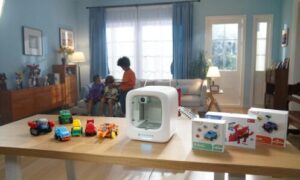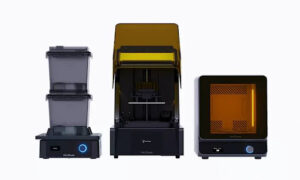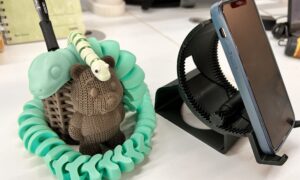Welcome to the captivating world of 3D printing, where imagination meets innovation and possibilities are limitless. From shaping prototypes with intricate details to revolutionizing the field of prosthetics, this groundbreaking technology has transformed how we approach design and manufacturing. In this blog post, we delve into the diverse applications of 3D printing technology that have not only accelerated production processes but also improved lives in unimaginable ways. So fasten your seatbelts as we embark on a journey through an extraordinary realm where dreams take shape and boundaries are shattered – from prototypes to prosthetics.
Introduction to 3D Printing Technology
3D printing technology has come a long way in recent years, and its applications are now far more diverse than ever before. Once used primarily for prototyping and small-scale manufacturing, 3D printers are now being used to create everything from prosthetic limbs to buildings.
In this section, we’ll take a closer look at 3D printing technology and some of its most popular applications. We’ll also touch on the benefits and limitations of this type of printing so that you can better understand how it might be able to help you.
Different Industries Utilizing 3D Printing
3D printing technology has been around for several decades, but it has only recently begun to be utilized in a variety of industries. Here are a few examples of how 3D printing is being used in different industries:
1. Prototyping: Many companies use 3D printers to create prototypes of new products before they go into mass production. This allows them to test the design and function of the product before investing a lot of money in manufacturing it.
2. Manufacturing: Some companies are using 3D printers to manufacture small batches of products, or even individual items on-demand. This can be helpful for companies that need to produce custom parts or products in small quantities.
3. Healthcare: 3D printing is being used in the healthcare industry to create prosthetic limbs, implants, and other medical devices. This technology is helping to improve the quality of life for many people who need these devices.
4. Food: Believe it or not, there are companies that are using 3D printers to create food items like pizza and chocolate. This technology can be used to create customized meals or snacks that are difficult to make with traditional methods.
5. Art: Artists are beginning to use 3D printers to create unique sculptures and other art pieces. This type of printing gives artists a new way to express their creativity and produce one-of-a-kind pieces .
The Benefits of 3D Printing
The benefits of 3D printing technology are vast and varied. From its inception, 3D printing has been used to create prototypes and models for product development and testing. In recent years, however, the medical field has begun to harness the power of 3D printing to create custom prosthetics and implants, as well as assist in surgeries.
3D printing offers a level of customization that is unrivaled by traditional manufacturing methods. For patients requiring prosthetics or implants, this means that devices can be created specifically for their individual anatomy. This results in a better fit, which can improve comfort and function.
In addition, 3D printing helps surgeons to plan and execute complex procedures with greater precision. By being able to print out a patient’s specific anatomy, surgeons can rehearse a surgery ahead of time and identify potential issues that may arise during the procedure. This allows them to make necessary adjustments prior to operating, which can ultimately lead to better outcomes for patients.
Obtaining a 3D Printer
3D printing technology has come a long way in recent years, and its applications are becoming increasingly diverse. One of the most exciting applications of 3D printing is in the area of prosthetics. Prosthetic limbs that have been 3D printed can be custom-fit to individual patients, and they can be made much more cheaply and quickly than traditional prosthetics.
If you’re interested in obtaining a 3D printer for yourself, there are a few things you should keep in mind. First, it’s important to select a printer that is capable of printing the type of material you want to use. There are many different types of 3D printers on the market, so it’s important to do your research to find one that will work best for your needs.
Next, you’ll need to purchase the appropriate software and hardware to operate your printer. Most 3D printers come with everything you need to get started, but it’s always a good idea to double-check before making your purchase. Once you have everything you need, you’ll be ready to start printing.
Applications of 3D Printing, such as:
3D printing technology has found a wide range of applications in recent years. Prototyping is one of the most popular uses for 3D printers, as it allows companies to quickly and easily create models of their products. This can be used for everything from testing the function of a new product to checking its aesthetics.
Another common use for 3D printing is creating prosthetic body parts. This includes everything from simple items like replacement teeth to more complex items like artificial limbs. This type of printing is often used in cases where traditional methods are not possible or would be too expensive.
3D printing can also be used to create customized gifts ornaments. This could include anything from a replica of a loved one’s face to an intricate piece of jewelry. These items can be made using photos or 3D scans, and they make great gifts for special occasions.
There are many other potential uses for 3D printing technology. These are just a few of the most popular applications at the moment. As the technology continues to develop, it is likely that even more innovative and exciting uses will be found for it in the future.
– Manufacturing & Design
The term “3D printing” covers a wide range of additive manufacturing technologies that build objects one layer at a time from three-dimensional data. While early 3D printers were limited to plastic materials, today’s printers can create functional objects from metals, ceramics, glass, and even human cells. This technology is transforming manufacturing across a broad range of industries, from aerospace to automotive to consumer goods.
In the medical field, 3D printing is being used to create customized prosthetic devices and implants. The technology is also being used to create visualization aids such as anatomical models and surgical planning tools. In the area of drug development, 3D printing is being used to create custom pills and FDA-approved drugs.
In the food industry, 3D printing is being used to create chocolates, candies, and other confections. In the textile industry, it is being used to create fabrics with intricate patterns and designs. In the footwear industry, it is being used to create shoes with complex geometries that would be impossible to achieve with traditional manufacturing methods.
With its ability to quickly and efficiently create objects from digital data, 3D printing is poised to revolutionize manufacturing across a broad range of industries.
– Healthcare & Medicine
3D printing technology is already being used in a number of different ways within the healthcare and medicine industries. Prototypes of new medical devices and implants can be created quickly and cheaply using 3D printers, which helps to speed up the development process. In some cases, 3D printed prosthetic limbs are already being used by patients. This technology also has the potential to be used for creating customized medicines and drugs, which could be tailored to the specific needs of individual patients.
– Education & Research
There are a diverse range of applications for 3D printing technology, with new uses being discovered all the time. One area where 3D printing is having a huge impact is in education and research.
3D printing is providing researchers with a new way to create prototypes and models of their ideas. This is particularly useful in the fields of medicine and engineering, where accurate models are essential for testing purposes.
3D printing is also being used to create prosthetic limbs for amputees. This has the potential to revolutionize prosthetics, making them more affordable and customizable.
It’s not just adults who are benefiting from 3D printed prosthetics; children are too. One company, Limitless Solutions, creates personalized arms for children using 3D printers. These arms are not only functional but also stylish, giving children a sense of pride and confidence.
3D printing technology is also being used in educational settings to help students learn about complex concepts. For example, students can now print out 3D models of DNA strands or anatomical structures. This allows them to get a better understanding of these concepts than they would from looking at flat images in a textbook.
– Automotive & Aerospace
While the automotive and aerospace industries have been early adopters of 3D printing technology, its applications are much more diverse than that. 3D printing has been used to create everything from prototypes to prosthetics, and the possibilities are only limited by our imagination.
In the automotive industry, 3D printing is used to create prototypes of new car designs. This allows engineers to test the design before it goes into production, which saves time and money. In the aerospace industry, 3D printing is used to create parts for satellites and rockets. This allows for a more efficient use of resources and helps reduce waste.
3D printing technology is also being used in the medical field to create prosthetics and implants. This revolutionary technology is helping people with disabilities lead more independent lives. In the future, 3D printed organs may even be made available for transplantation.
The potential applications of 3D printing technology are endless. As we continue to explore this fascinating technology, we are sure to discover even more ways to use it in our everyday lives.
Examples of Major Companies Using 3D Printing
Some of the world’s largest and most innovative companies are using 3D printing technology to create products, prototypes and parts. Here are a few examples:
Boeing: The aerospace giant is using 3D printing to create parts for its new 787 Dreamliner aircraft. In fact, Boeing is the largest user of 3D printers in the manufacturing industry.
GE Aviation: GE is using 3D printing to create fuel nozzles for its jet engines. The company has also used 3D printing to create engine parts that are 30% lighter and 10 times stronger than traditional metal parts.
Toyota: Toyota is using 3D printed molds to create auto parts with complex shapes. The automaker is also experimenting with using 3D printed robots in its factories.
Procter & Gamble: P&G is using 3D printing to create prototypes of new product packaging designs. The company has also used 3D printing to create custom-fit dental guards for Olympic athletes.
Conclusion
3D printing technology has come a long way since it first arrived on the scene. From helping to create intricate prototypes in product design and development, to being used for medical applications such as creating prosthetics or customizing implants, 3D printing is revolutionizing the way many industries operate. This technology continues to surprise us with its limitless possibilities and we can only expect great things from this versatile form of manufacturing in the years ahead.


































